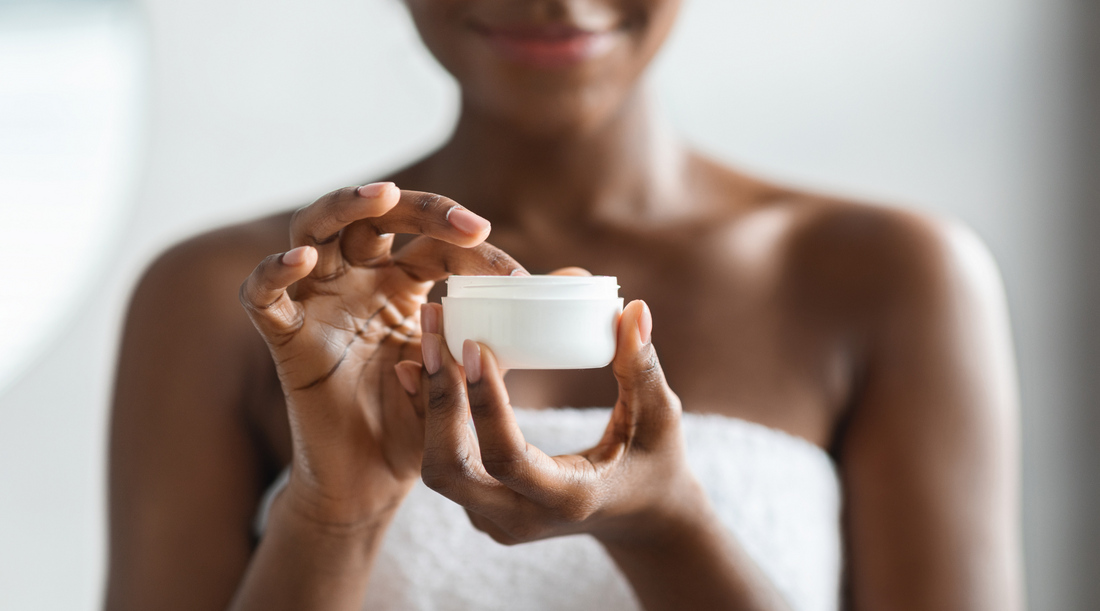
Endocrine Disruptors: The Hidden Threat to Your Fertility
While various factors can influence fertility, a growing body of research suggests a potential link between endocrine disruptors (EDCs) and female reproductive health.
In this blog post, we delve into the world of EDCs and explore their potential influence on female fertility. We'll uncover the mechanisms by which EDCs can disrupt the delicate hormonal dance essential for ovulation and a healthy reproductive system. We'll shed light on common sources of EDC exposure in our everyday lives, and empower you with actionable strategies to minimize your exposure and create a healthier environment for optimal fertility.
By understanding the potential impact of EDCs and taking proactive steps to reduce exposure, you can take charge of your fertility health and create a more favorable foundation for conception.

How EDCs Disrupt Fertility
Endocrine disruptors are chemicals that can interfere with endocrine systems. EDCs can mimic, block, or alter the way hormones naturally function in our bodies. This disruption can have a significant impact on various physiological processes, including those crucial for fertility.
Imagine a beautifully choreographed dance – a complex interplay between hormones that orchestrates ovulation, menstruation, and ultimately, the miracle of life. The key players in this dance being estrogen, progesterone, FSH and LH – each playing a vital role in helping your body create and carry a baby.
Estrogen stimulates the growth of follicles in the ovaries, which house developing eggs. Progesterone prepares the uterine lining for implantation of a fertilized egg. Follicle-Stimulating Hormone (FSH) initiates the development of follicles in the ovaries. Finally, Luteinizing Hormone (LH) triggers ovulation, the release of a mature egg from the ovary.
Now, picture an uninvited guest crashing this intricate performance, throwing the dancers off balance and disrupting the flow. This is precisely what endocrine disruptors (EDCs) can do to the delicate hormonal symphony within our bodies.
EDCs can wreak havoc on this hormonal dance in several ways, including:
- Mimicking Hormones: Some EDCs have a similar structure to natural hormones like estrogen. They can bind to hormone receptors, tricking the body into responding as if the real hormone were present. This disrupts the delicate balance of hormone levels needed for proper ovulation and menstruation.
- Blocking Hormone Receptors: Think of hormone receptors as docking stations for specific hormones. EDCs can occupy these docking stations, preventing the natural hormones from binding and exerting their effects. This can hinder crucial hormonal signals needed for ovulation and a healthy uterine lining.
- Disrupting Hormone Production: EDCs can interfere with the body's ability to produce, store, or break down hormones. This disrupts the normal hormonal cycle and can lead to irregularities in ovulation and menstruation.

Impact on Fertility: Where the Disruption Matters
Disruptions caused by EDCs can manifest in various ways, negatively impacting your potential to conceive. One possible impact is ovulatory dysfunction. EDCs can affect the frequency of ovulation or the quality of the developing eggs, making it harder to conceive. Another possibility is altering the uterine lining. A healthy uterine lining is essential for implantation. EDCs can hinder the development of this lining, reducing the chances of a successful pregnancy. EDCs also increase our risk for developing fertility- affecting diagnosis. For example, recent research suggests a link between EDCs and endometriosis, a condition where endometrial tissue grows outside the uterus. This can cause pain, inflammation, and fertility problems. Some studies also suggest EDCs might play a role in the development of Polycystic Ovary Syndrome (PCOS), leading to irregular ovulation and other fertility challenges.
Common Sources of Endocrine Disruptors
EDCs are ubiquitous in our modern world, lurking in various everyday products and environmental exposures. While we can't completely eliminate them, being aware of common sources empowers us to make informed choices and minimize exposure. Here's a closer look at some everyday culprits:
- Plastics: Once widely used in plastic bottles, containers, and linings, Bisphenol A (BPA) is a known EDC. Look for BPA-free alternatives whenever possible. Also Phthalates are chemicals used to increase flexibility in plastics like food containers and thermal receipts. Choose glass or stainless-steel containers for food storage and avoid handling receipts for extended periods.
- Personal Care Products: Many conventional cosmetics, lotions, sunscreens, and fragrances contain EDCs. Opt for natural, organic brands that are free of harmful chemicals. Look for labels mentioning "paraben-free" and "phthalate-free."
- Household Cleaners and Pesticides: Some cleaning products and insecticides contain EDCs. Choose eco-friendly cleaning solutions and explore natural pest control methods whenever possible.
- Conventional Produce: Pesticides used on conventionally grown fruits and vegetables may contain EDCs. Consider buying organic produce whenever possible to minimize exposure.
- Contaminated Water: Depending on the source and treatment methods, drinking water might contain trace amounts of EDCs. Invest in a good quality water filter to reduce potential contaminants.
This list is not exhaustive, but it highlights some of the most common sources of EDCs in our daily lives. By being mindful of these everyday exposures, we can take proactive steps to create a healthier environment for ourselves and our fertility.

How to Minimize Your EDC Exposure
Knowledge is power, especially when it comes to protecting your fertility health. The good news is that by incorporating some simple changes into your daily routine, you can significantly reduce your exposure to EDCs. Here are some actionable strategies to empower you:
Reduce Plastic Use:
- Ditch the Plastic Bottles: Invest in a reusable water bottle made from glass or stainless steel.
- Store Food Wisely: Opt for glass or stainless steel containers for food storage and avoid using plastic wrap whenever possible.
- Beware of Takeout Containers: When ordering takeout, request food packaged in paper or cardboard containers instead of plastic.
Make Smarter Choices with Personal Care Products:
- Become a Label Detective: Scrutinize ingredient lists on personal care products and choose brands that are free of BPA, phthalates, and parabens. Look for labels like "natural," "organic," and "EDC-free."
- Embrace Natural Alternatives: Explore natural deodorants, sunscreens, and cosmetics made with organic ingredients.
- Rethink your beauty routine. The fewer products you use, the less potential exposure to EDCs, so when it comes to EDCs, think "less is more" and let your natural beauty shine through!
Create a Clean Home Environment:
- Go Green with Cleaning Products: Opt for eco-friendly cleaning solutions made with plant-based ingredients. You can even create your own natural cleaning solutions using vinegar, baking soda, and essential oils.
- Fight the Pest Problem Naturally: Explore natural pest control methods like using diatomaceous earth or essential oils to deter unwanted insects.

Reduce EDCs in Your Food & Water:
- Choose Organic When Possible: Prioritize organic fruits and vegetables whenever possible to minimize exposure to pesticides that might contain EDCs.
- Wash Conventional Produce Thoroughly: If opting for conventional produce, wash fruits and vegetables thoroughly under running water to remove potential pesticide residues.
- Invest in Water Filtration: Consider using a good quality water filter at home to filter out contaminants and reduce potential EDC exposure from your drinking water.
- By incorporating these strategies into your lifestyle, you can significantly reduce your exposure to EDCs and create a healthier foundation for optimal fertility. Remember, small changes can make a big difference!

Sources:
- Environmental Working Group. (n.d.). Retrieved March 26, 2024, from https://www.ewg.org/
- National Institutes of Health. (n.d.). Endocrine Disruptors. Retrieved March 26, 2024, from https://www.niehs.nih.gov/research/supported/exposure/endocrine
- The Endocrine Society. (n.d.). Endocrine Disruptors (EDCs). Retrieved March 26, 2024, from https://www.endocrine.org/patient-engagement/endocrine-library/edcs
- Carneiro, A. M., Rosa, V. M., Machado, A. V., Santos, A. R., & Pereira, N. G. (2019). The role of endocrine disruptors in female infertility: a review of pesticide and plasticizer effects. Reproductive Biology and Endocrinology, 17(1), 30. https://pubmed.ncbi.nlm.nih.gov/35789730/
- Jégou, B., Petit, F., Fryer, J., Knopp, K., Murdoch, G., & Sharpe, R. M. (2017). The epigenetic impacts of endocrine disruptors on female reproduction across generations. Molecular and Cellular Endocrinology, 445, 81-90. https://www.ncbi.nlm.nih.gov/pmc/articles/PMC6791056/
- Mondal, D., Kundu, I., Mukhopadhyay, A. K., & Gupta, M. (2008). The role of endocrine disruptors in female infertility. Molecular Biology Reports, 35(2), 303-312. https://www.ncbi.nlm.nih.gov/pmc/articles/PMC10374778
- Gemini (Large Language Model). Feed Fertility Blog (2024).
